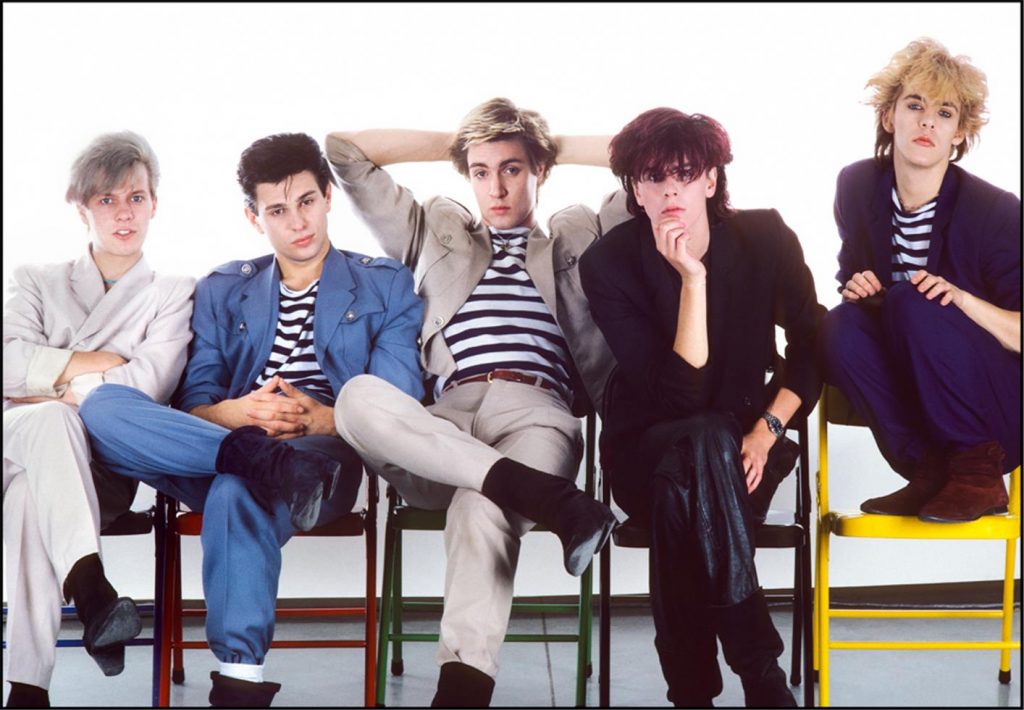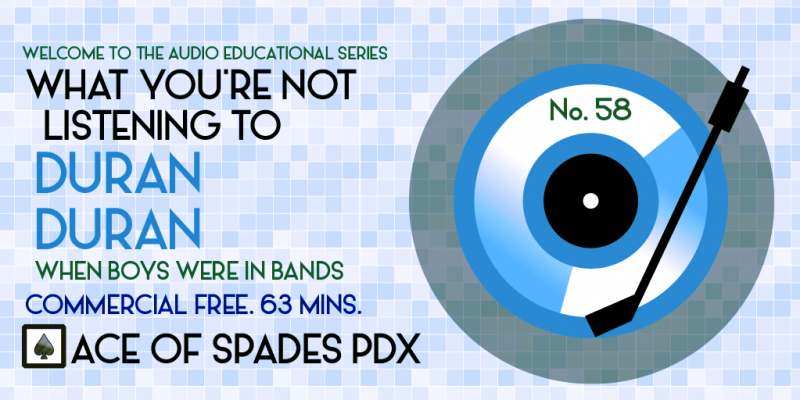Podcast: Play in new window | Download | Embed
Along with Michael Jackson, this was the band that helped kick-start a lifeless and dull music scene in the early 1980’s. #duranduran #synthpop #newwave #boyband #dancemusic
At the dawn of the 1980’s in the U.S., the music industry was reeling from a variety of problems: an oil crisis that led to a vinyl shortage, an economic recession and the ugly death of the 1970’s music scene’s most visible genres, Funk, Disco, Punk and Hard Rock. The charts were filled with often bland, adult contemporary hits that spoke more to adults with money than to young people.
Of course, about every ten years or so, a new, more exciting artist, band or concept comes along that changes the game. In late 1982, there were three simultaneous movements that were about to literally sweep aside all of the cobwebs: Thriller by Michael Jackson, the second British Invasion, led by Duran Duran and the rise of videos on MTV.

On paper, all looked fairly ridiculous, but as someone who was there, let me tell you how the old guard got completely caught with their pants down. Both Jackson and Duran Duran also benefitted from the video explosion immensely, as older acts derided it as just a fad.
By early 1983, the charts again were FUN. They were EXCITING. You could actually DANCE to what was played on the radio. It was fun, cool, hip and fashion was again a part of the equation, as it always has been in one form or another in any music genre, naysayers be damned.
“It’s pathetic to have regrets about fashion.”
Simon Le Bon, Singer, Duran Duran
Leading the charge from the U.K. was not the first artist to break through to U.S. mainstream audiences from Britain in this second wave. However, they learned quickly how the industry worked, and it made a boy band, who wrote their own songs and played their own instruments, a seemingly overnight sensation, especially with young women. As bluesman Willie Dixon once sang, “What the men don’t know, the little girls understand.”
Duran Duran started out in Birmingham England, home to a diverse music scene second only to London in terms of influence and scope. Much like many of the most popular and long-lasting groups in history, they started out playing in clubs, becoming a fixtures of the local night life.

They eventually singed to EMI, as the legend goes, because it was British. The band quickly developed a huge fan base around the world except in the U.S., in spite of constant touring and single/video releases. in late 1982, they asked their American label, Capitol, for a change: they wished to have their second album, Rio, remixed as more of a dance record, since the genre of New Romantic, which they were with identified early on, never caught on in the colonies.
The risk paid off, so much so that they repeated the trick for their debut. As a result, 1983 proved to be a pivotal year for the band: they ended up scoring four top 20 Billboard Hot 100 singles from three different Billboard 200 top 10 albums. They would maintain success throughout the rest of the decade, but at a price.

After their massive 1984 world tour, the band went on hiatus and recorded successful side projects. But after their second #1 Billboard Hot 100 single (and still the only Bond theme to reach the pole position here), the band became a trio, with guitarist Andy Taylor leaving the band under less-than-stellar circumstances and with Roger Taylor actually retiring for many years.
They would eventually reform with their original line-up in 2004, much to delight of fans everywhere. In 2015, out of seemingly nowhere, they also scored their first top 10 Billboard LP in decades. It still seems that in a world of auto-tuned everything, there is still some room for some old-time rock and roll dance party music, and God bless Duran Duran for that.
First Part
- Rio (album version), 1982, Rio
- Girls On Film, 1981, Duran Duran
- All She Wants Is, 1988, Big Thing
- Union of The Snake, 1983, Seven and the Ragged Tiger
- Notorious, 1986, Notorious
- Planet Earth (Night Version), 1981, 12″ single mix and on initial pressings of the U.S. release of Duran Duran
Second Part
- Hungry Like The Wolf, 1982, Rio
- I Don’t Want Your Love, 1988, Big Thing
- The Reflex (single remix), 1984, single A-side, original version on Seven and the Ragged Tiger
- A View to a Kill, 1985, single A-side and from the soundtrack LP James Bond In a View to a Kill
- My Own Way, 1981, original single A-side
Finale
- Hold Back the Rain (remix), 1982, 12″ B-side, original version on Rio
Love to you all.
Ben “Daddy Ben Bear” Brown Jr.
Host, Producer, Audio Engineer, Webmaster, Researcher and Writer
“Copyright Disclaimer Under Section 107 of the Copyright Act 1976, allowance is made for ‘fair use’ for purposes such as criticism, comment, news reporting, teaching, scholarship, and research. Fair use is a use permitted by copyright statute that might otherwise be infringing. Non-profit, educational or personal use tips the balance in favor of fair use.”
